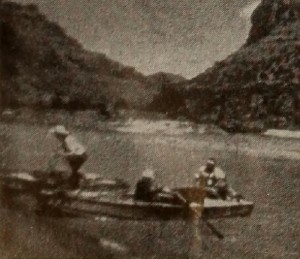
"Louise M. Fetzner is a housewife who plainly likes the thrills of running the rapids down dangerous rivers while she makes movies that really move! In Green River, Mrs. Fetzner has a well paced, well photographed and altogether literate account of the adventures which she and her companions had on the Colorado's main tributary. The film is interesting and exciting, and tells its story concisely and without padding. The accompanying narrative is written and delivered effectively, although occasionally the level of the background music rises to overwhelm the narrator's voice." Movie Makers, Dec. 1953, 344.
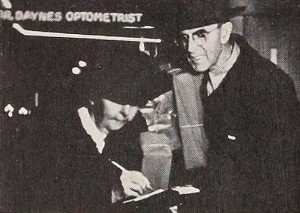
"A delightful film of the home is A Greene Christmas, produced by Mildred Greene. Here is a record of a domestic Christmas that may well serve as an exemplar to other movie makers who are tempted to wander far afield. No startling new stunts in technique or effects of continuity are displayed, yet the film is so homelike, pleasant and sincere that it commands recognition as an achievement. Naturally, however, all departments which contribute to the completion of the film are more than adequately handled. The interior lighting, which resulted in perfectly exposed color shots in the familiar home settings, is noteworthy. Special recognition should be accorded the successful, well exposed shots of the subjects out of doors at night in one sequence. All the actors, members of her immediate family and friends, including the producer, were naturally and pleasantly shown, but the palm for outstanding characterization must go to Miss Greene's mother, who played the part of herself in a most delightful and unaffected way. The preparation of the color titles for this film deserves special mention because of their perfect exposure, fine backgrounds and outstanding arrangement of metal script letters. (Miss Greene tells about making A Greene Christmas in Stretching Christmas, in this number of Movie Makers.)" Movie Makers, Dec. 1939, 609.
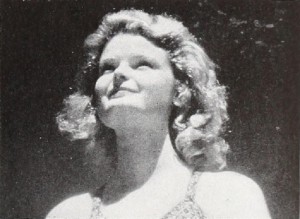
"To the production of Hail, British Columbia!, Leo J. Heffernan brought the filming talent and the fertile imagination that have marked his previous pictures. But, in this film, he has surpassed himself. He has produced a travelog, a scenic film or a record of British Columbia that covers all the diverse high lights of that province, but which still has unity. He has made a movie that is technically superior to the best theatrical travelogs, and certainly more entertaining. Mr. Heffernan has two great gifts — the capacity to improvise sequences during his travels and the ability to invent amusing and apparently natural episodes that fit the theme of his picture. This latter gift is a dual one, for it includes the ability to direct actors — people whom Mr. Heffernan meets here and there and persuades to "take a part" in his movie. The continuity of Hail, British Columbia! is ingenious and suavely followed. A girl gets off a Canadian train at a way station, where she finds a "Mountie." To him, she puts the problem, "What should I see in British Columbia?" The Mountie is somewhat taken aback, but he gradually recalls things to tell a tourist, and the picture unfolds his story. Heffernan like, there is a surprise twist at the end, which we shall not spoil by telling. Discussion of Hail, British Columbia! would be incomplete without at least a mention of the magnificent logging sequence, the clever camera work in presenting a story of a bicycle ride, the beautiful scenic shots and Canada's blondes! This picture has everything!" Movie Makers, Dec. 1941, 541.
"Havana, 400 ft., 16 mm., made by Herman Danz, is outstanding among the recent travel and vacation films rather more for its photographic quality than for its continuity. The film presents Havana, its harbor, street scenes and architecture. Mr. Danz has avoided almost all of the amateur's pitfalls, for the film contains no instances of wobbly "pamming," [sic] jerky shots or unfortunate camera angles, encountered so often in films of foreign cities. Even more important, the treatment is impersonal throughout and purely intimate shots were either not taken or were edited out to be included in a family reel. Thus the film is the type that strangers and friends can enjoy as much as a professional treatment of the same subject. Filters used with panchromatic film brought out cloud formations hanging over the picturesque harbor and emphasized the colorful architectural detail of the buildings." Movie Makers, Dec. 1930, 758-759.
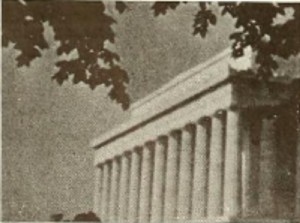
"In Holiday in Dixie, Morton H. Read, a Yankee from Massachusetts, has so well understood the essence of the Old South that he has called back from its storied urns a breath which inspires the whole film so intimately that Southern hats should come off to him. His remarkable sympathy with the remains of the Cavalier era has made it possible for him to present them with conviction and fire. Mr. Read first shows us Washington with its dignity and spaciousness, by carefully chosen shots. He pauses for an inspection of the caverns at Luray, and then he goes on to study the lovely cities of Lexington and Williamsburg. We reach the deep South at Charleston and the Ashley River; it is in this part of the film that its maker establishes his vivid emotional identity with a past epoch. A sequence of Negro rural life is brilliantly handled, and the film comes to an amazing climax with scenes of the trees and flowers in the gardens of ancient estates. With music and with a narrative that sets a new standard in this newer phase of personal movies, the mood of the film is not only sustained, but amplified, so that, after the projection, one wonders which of the three — film, music or words — one will longest remember." Movie Makers, Dec. 1940, 599-600.
"Un-staged documentary footage shot and edited by Sallie Wagner. Sallie's description of the film: 'Jimmy Hill flagging train at Chambers, Arizona, Post Office at Chambers, Bob Cassidy Postmaster, plane drop at Wide Ruins, Bill Cousins picking up package. Wide Ruins trading post exterior and interior, Bill and Sallie, Bill's office is original trading post of Day Brothers, Bill Cousins at front of airplane, crash of transcontinental racer on highway. Square dance, Eleanor Pratt in blue blouse near ladder, Jack Norton heavy set fellow, Phil Pratt extreme left, John Adair with back to screen, Dick Tryon [Tyron?] near rocks. Dwight Wagner - white shirt and tie near rose bush, Sallie in front of Spring house'." New Mexico State Archives.
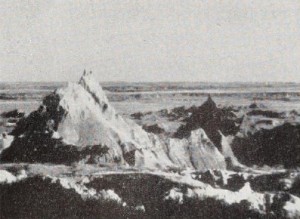
"Films about national parks and monuments fall into the traps of banality with greater ease than almost any other variety of footage. It was. therefore, with great delight that the judges reviewed Timothy and Delores Lawler's Isle of the Dead. For, using the famed Boecklin painting and the equally known Rachmaninoff music as theme and atmosphere, the Lawlers have produced a cinematic tone poem from the materials offered by Yellowstone and the Badlands. Their efforts completely dominate both music and painting, which become effective substrata of the esthetic whole. The film's great virtue and its slight defects spring from the same source — the single mood that the Lawlers have worked for and have achieved." Movie Makers, Dec. 1950, 464-465.
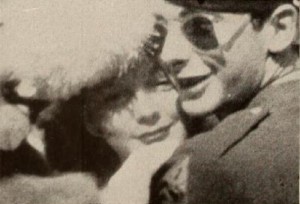
"An eye for topical touches and a persistence that would shame the most aggressive news cameraman are responsible for Terry Manos's success in recording the V-E Day activities in New York City. Without the aid of a telephoto lens and balked at every turn by finicking guards, Mr. Manos's camera nevertheless caught the full flavor of the celebration in Times Square as well as some amazingly sharp studies of the personalities who participated in the program at Central Park. For ignoring the theoretical limitations often ascribed to the 8mm. camera and producing a well knit movie of a great historical event, praise is due to an enterprising amateur." Movie Makers, Dec. 1946, 488.
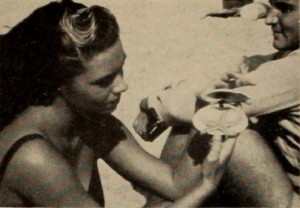
"By a facile blending of warm hearted humor and a keen perception of human interest values, George Mesaros has created a film study of a famous beach in New York's metropolitan area that is replete with interest, information and entertainment. His technical skill and knowledge of what makes a motion picture move prevent this from being the dull collection of random shots all too frequently characteristic of this genre subject. Employing himself as a frenzied and frustrated shutterbug and a filming friend as plain Joe Doakes at the beach with his wife, a lunch and box camera, Mr. Mesaros proceeds to examine with interest and obvious affection the thousand and one attractions of the Long Island resort. An excellent musical score and a brief commentary help to integrate the compact 700 feet of the film's lively length." Movie Makers, Dec. 1949, 454.
Total Pages: 18